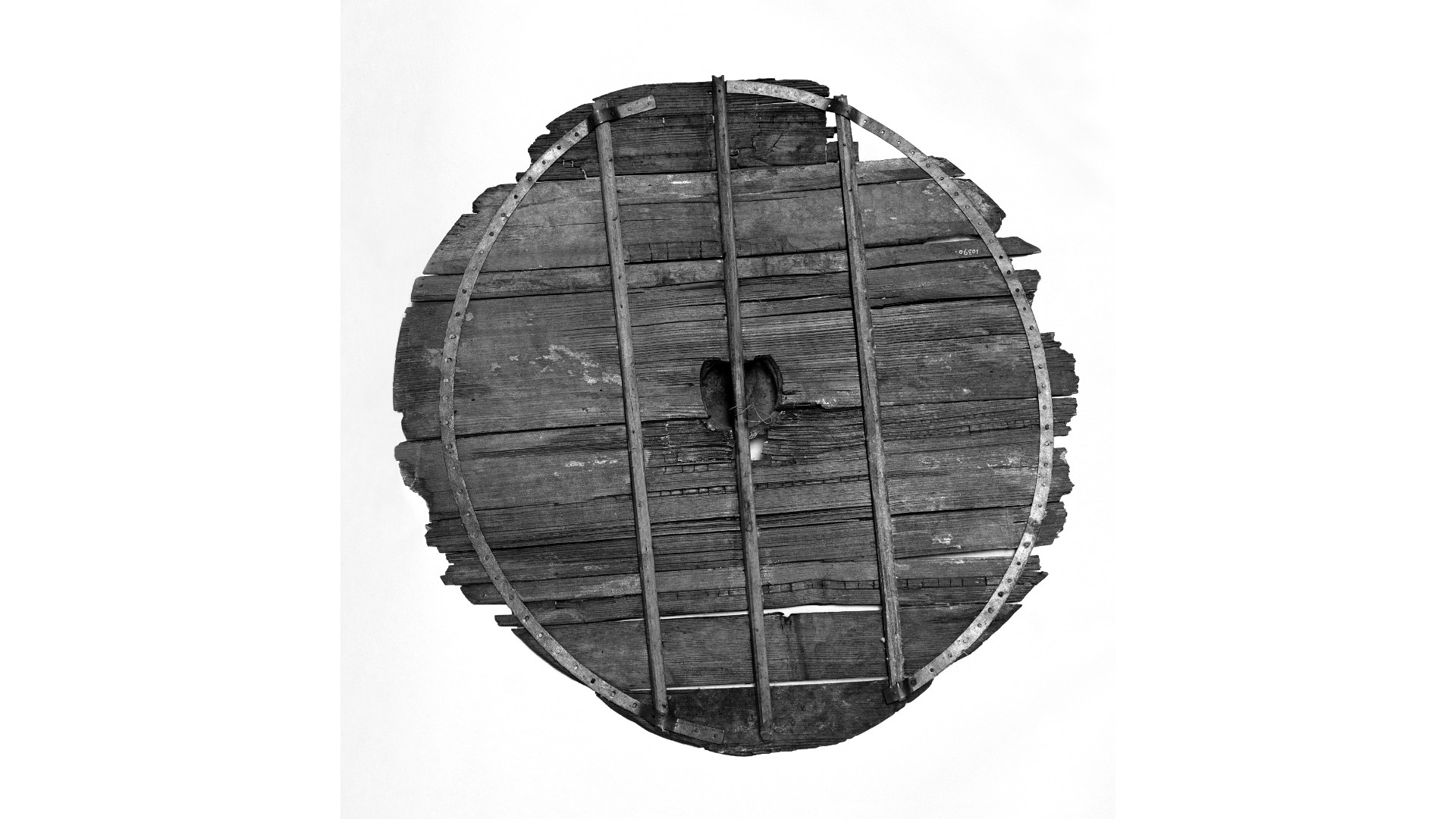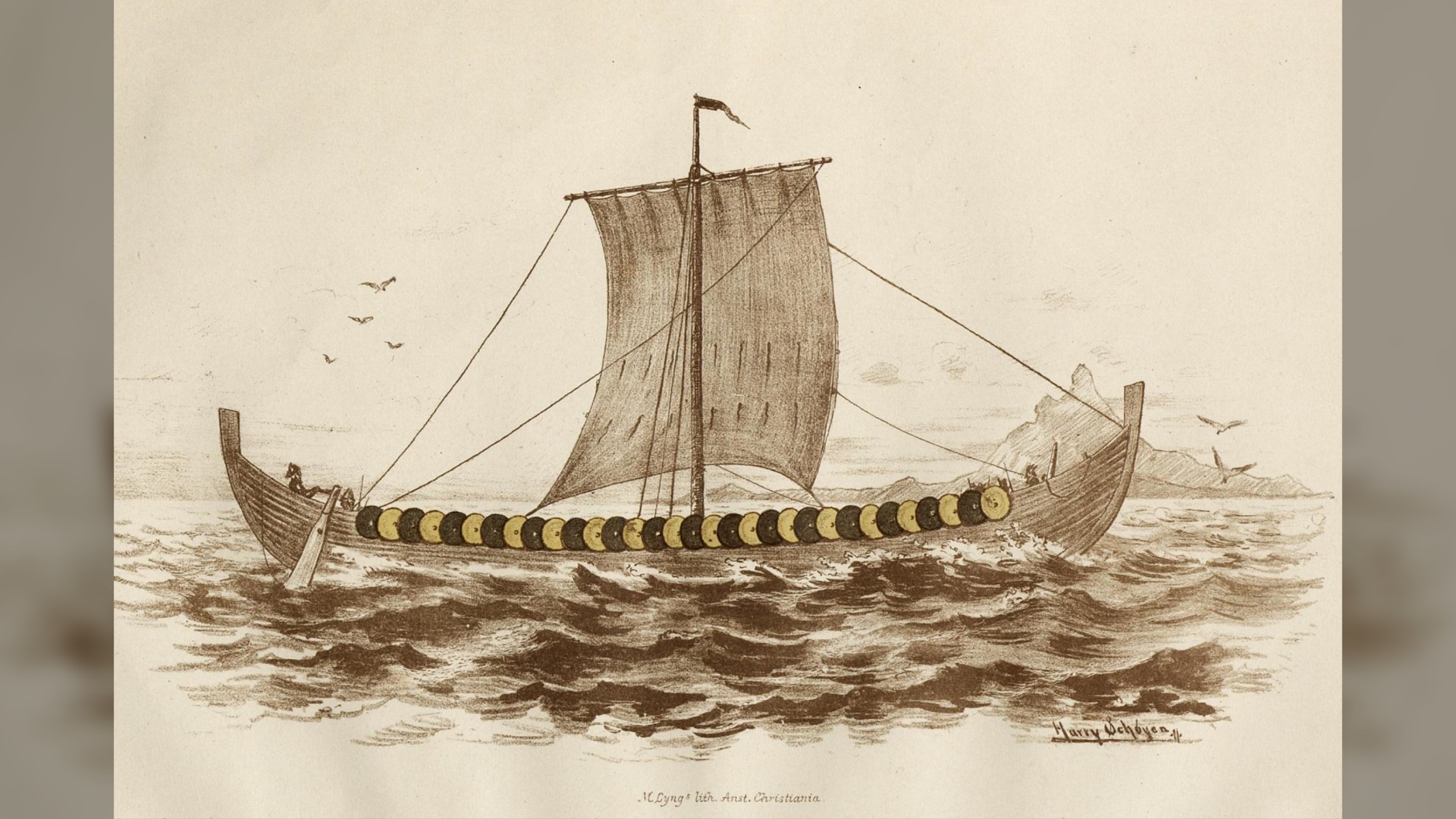1,100-year-old 'ceremonial' Viking shields were actually used in battle, study suggests
The Viking shields found on the Gokstad ship in 1880 were not strictly ceremonial and may have been used in hand-to-hand combat, according to a new analysis.

Dozens of Viking round shields from a famous ship burial unearthed in Norway were not strictly ceremonial as long thought; instead they may have protected warriors in battle, a new study finds.
A reanalysis of the wooden shields, which were unearthed in the Gokstad ship in southern Norway in 1880, suggests they may have once been covered with rawhide (untanned cattle skin) and used in hand-to-hand combat, according to a new study published on March 24 in the journal Arms and Armour.
"The [Gokstad] shields are generally in accordance with our understanding of shields that have been used in combat," study author Rolf Warming, a doctoral student of archaeology at Stockholm University, told Live Science in an email. "The craftsmanship is in the tradition of the Germanic flat round shield tradition, which is a widespread weaponry technology in Scandinavia between the early 3rd to late 13th centuries."
A total of 64 shields — possibly one for each of the crew on board, Warming said — were tied along the top edge of the hull of the ship, just above its oar-holes.
The vessel was once used at sea, probably for warfare, trade and transportation. But about 900, it was dragged onto land and used for the burial of a Viking king.
Related: Viking warriors sailed the seas with their pets, bone analysis finds
Viking shields


Warming's reanalysis shows the shields consisted of tapered wooden boards or planks around an iron hemisphere known as a boss on one side and a wooden handle on the other, although only one handle has survived. This would have made the shields light and easy to maneuver.
Get the world’s most fascinating discoveries delivered straight to your inbox.
The planks of each shield were painted either yellow or black, giving the overlapping shields the appearance of yellow and black crescent moons.
Archaeologists in the past have suggested these shields had only a ceremonial function. But Warming has evidence the shields were originally covered with a thin layer of animal hide layer to reinforce their planks and rims.
"There are fragments of an organic layer on top of the shield boards that may be remnants from such a layer, but these remain to be analyzed," he said. "There is nonetheless indirect evidence in the form of stitching holes and a chamfered [sloped] rim that indicate that the boards were constructed to accommodate a protective layer of some kind."
That strengthens the idea that the Gokstad shields were for use in combat and not just for decoration.
"They are probably best interpreted as equipment belonging to the ship and used by the crew aboard, either at sea or on land," Warming said.
Sea raiders
Ships like the one at Gokstad were crucial to the Vikings — a name derived from a term for Norse raiders used by the English they attacked.
While not all the Norse were Vikings, raiding for treasure and slaves became established in Scandinavia after the eighth century until the Norse converted to Christianity after the 10th century.
Viking ships had square sails; but they were also fitted with oars to use in ill-winds or when navigating rivers. These boats also had shallow and light clinker-built hulls, so seafaringVikings could get close to land and pull their boats ashore when needed.
Warming thinks the shields on the Gokstad ship have served as extra armor, or for a "show of strength" in such situations; and that Vikings could have untied from the hull for hand-to-hand combat.
There's no direct evidence that they were used in battle, but "some irregular notches and marks have been observed on the shield bosses," he said "These need to be submitted to careful use-wear analyses which may be able to indicate if the shields have been used in actual combat."
Warming added that shields were an important but often overlooked element of hand-to-hand combat.
"Shields can tell us a lot about bodily movement and therefore fighting techniques and tactics, so it is important to document them in detail," he said.
Jan Bill, the curator of the Viking Ship Collection at the University of Oslo's Museum of Cultural History, who wasn't involved in the study but is conducting separate research on the shields, called Warming's research "interesting and well-argued."
"It raises a relevant question that has also been raised by others," he told Live Science in an email. "The truth about the Gokstad shields is likely to be complex, and further, interdisciplinary research is necessary to illuminate it."
Tom Metcalfe is a freelance journalist and regular Live Science contributor who is based in London in the United Kingdom. Tom writes mainly about science, space, archaeology, the Earth and the oceans. He has also written for the BBC, NBC News, National Geographic, Scientific American, Air & Space, and many others.






